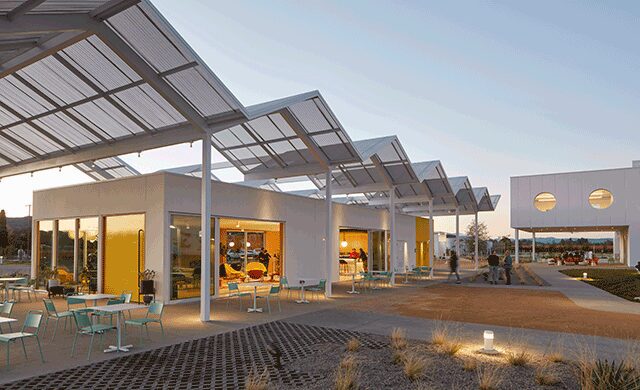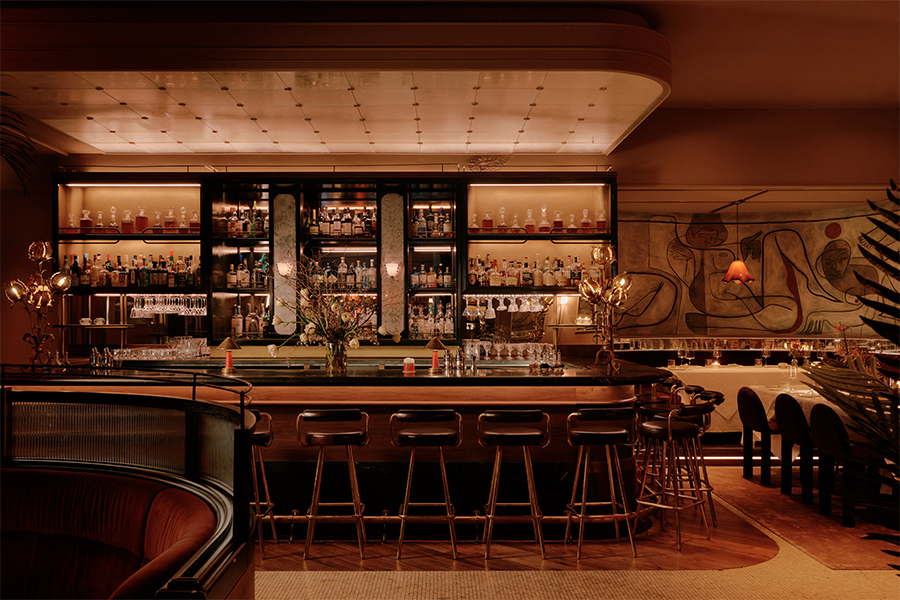For new and established wineries alike, it has become increasingly clear that the experience is as important as the bottled product, and that tasting rooms must offer a special palette for those, well, discerning palates. From California and Australia to China and the Czech Republic, we check in with five wineries that are crafting distinct atmospheres to enjoy the perfect pour.
Montoro Wines Cellar Door, Orange, Australia
Finding success with its cool climate Shiraz, Montoro Wines looked to local firm Source Architects to create the Cellar Door tasting room on its Central Highlands property in Orange, Australia. To set it apart from the competition, the firm chose a simple, contemporary design with a small footprint to encourage an intimate, personalized experience. Comprising glass, blackened timber, and a striking deep-folded steel roof, the structure, which resembles a private dining room, connects to the outside with a floating concrete platform that puts “the visitor firmly in the beautiful landscape,” says firm director David Sutherland.
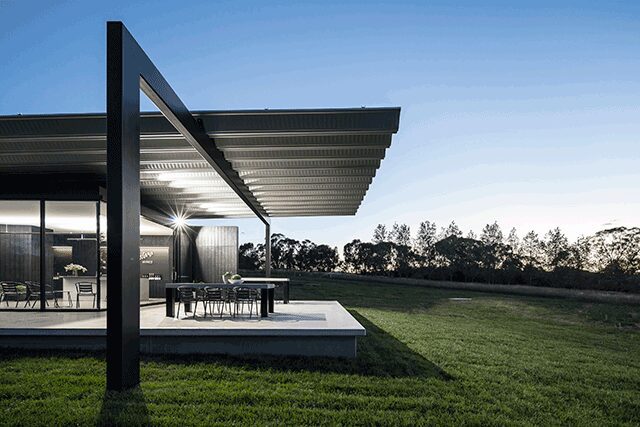
Obelisk Winery, Czech Republic
Located on a lush hill in the southern region of the Czech Republic, Obelisk Winery draws inspiration from the romantic buildings on the neighboring Lednice-Valtice Cultural Landscape complex. A color scheme of honey, beige, and brown adds a natural element to the ultra-contemporary glass, steel, and concrete building, which houses the wine shop, hall, and tasting room on the ground floor, and the wine production facilities in the cellar. “The cladding was originally intended to be wooden, but we convinced the owner that corroded sheet metal also ages and resonates with the surroundings,” explains Pavel Bainar of Brno, Czech Republic studio AiD Team. Adding to the theme are wine and hunting motifs that show up in artwork by Natalie Perkof, while “the installation on the ceiling evokes the baroque ceilings of the nearby Valtice Castle,” he says.
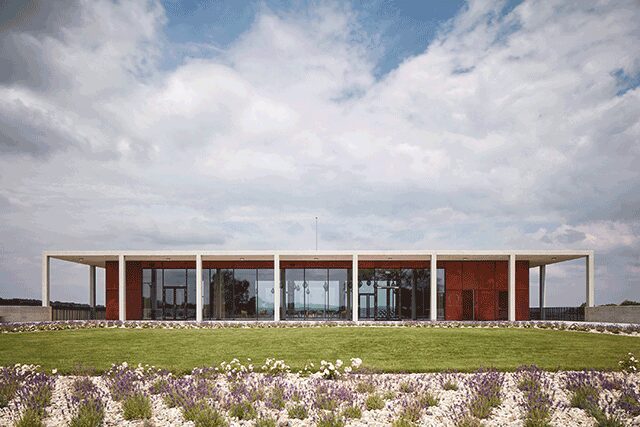
Ashes & Diamonds, Napa, California
Situated on 30 sprawling acres, the midcentury-infused Ashes & Diamonds vineyard boasts a striking new events and production center, led by architect Barbara Bestor, founder and principal of Los Angeles-based Bestor Architecture. Much like the vintage varietals the boutique winery produces, it also required a design that was equally ambitious. Eye-catching, pre-engineered building skeletons clad in insulated metal panels zigzag over one of the tasting areas, while the central courtyard “acts as a third room,” notes Bestor. Along with playful porthole windows, bright white stucco was chosen for the buildings’ exteriors to “contrast with the bright green of the fields and [become] a beacon to drivers passing by,” she explains. Beyond the stark façade, a buoyant interior is revealed, with lounge areas that resemble chic living rooms meant to attract a more youthful, wine-sipping crowd.

Scribe, Sonoma, California
In nearby Sonoma, Scribe has gained a reputation as a popular destination for the younger demographic looking to imbibe while also being served fare from a much-lauded chefs-in-residence program. This is due in part to the renovation of the once-abandoned Spanish Revival building, which dates back to the 1850s. The refresh is truly a celebration of its past. “Even in its decrepitude, it was the heart and soul of the property,” says owner Andrew Mariani, who would host friends for wine tastings and pizza parties in the courtyard. “Late California artist David Ireland was our guiding light,” he says of the hacienda’s renovation. Scribe creative director Nora Sibley Denker worked with San Francisco firm Aidlin Darling Design to create a winery that “exemplified the idea of storytelling by an uncovering of old layers and the subtle addition of new ones,” says David Darling, principal in charge of the project. The original wood paneling, pastel plaster walls, and floral wallpaper were preserved, while local artisans and craftspeople created custom furniture, ceramics, and lighting to celebrate “the people that make the [Northern California] community vibrant and distinct,” he adds.
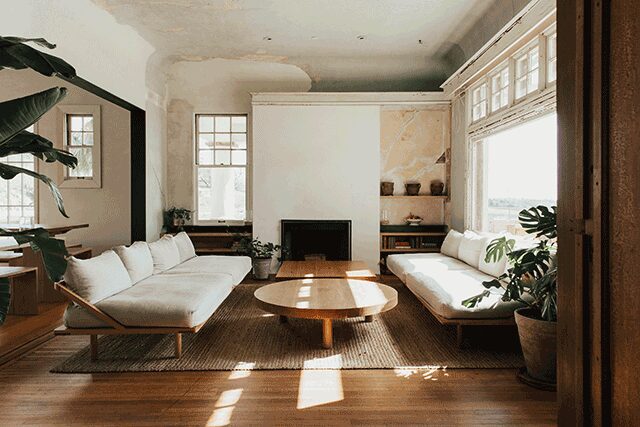
Luneng Wen’an Winery & Resort, China
A truly transformative experience was a key component for Luneng Wen’an Winery & Resort, part of a masterplan featuring a welcome center and residential villas, among other amenities. With interiors by BraytonHughes Design Studios, fellow San Francisco firm SB Architects created “a series of spaces that would be authentic to that bigger theme and create a connection between the winery and the hotel development,” says vice president and principal Bruce Wright. One of two hotels on the property, the commanding 400-room resort overlooks the vineyards from an island on the development’s manmade lake. Evoking a stately chateau in the South of France on an elevated hill, the winery—clad in limestone, brick, and pine—contrasts the resort’s rustic charm and lends itself to what Wright calls the “choreography of the hospitality that’s involved in winemaking.”


